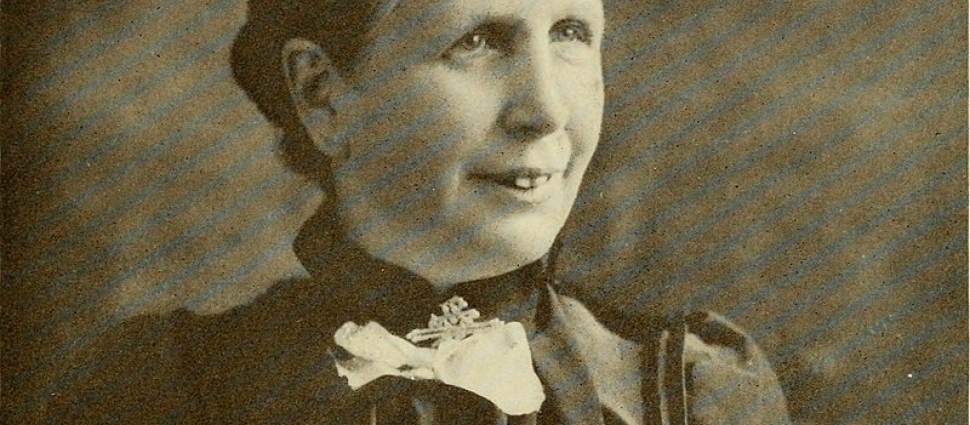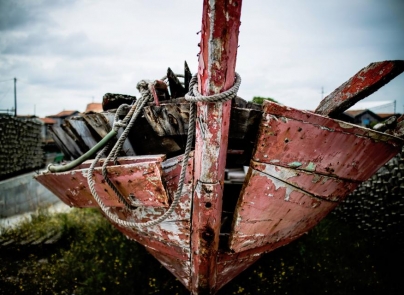Jennie Faulding Taylor and Her Team of Brave Women

Jennie Faulding Taylor and Her Team of Brave Women
In 1875, a serious drought in the north of China gave way to a dreadful four-year famine, with millions of deaths and a huge migration of people. Most casualties were in the province of Shanxi (an estimated 5.5 million deaths in four years). Timothy Richard, a Welsh Baptist missionary who had opened an orphanage in the area, wrote the renowned Hudson Taylor asking for some female missionaries to run it.
Brave Women
Taylor had a reputation for sending single female missionaries at a time when the concept was largely criticized. At this time, he was in England, nursing his failing health. After discussing this with his second wife, Jennie Faulding, she offered to go while he stayed in England with their children. She left with two single women, Anna Crickmay and Celia Horne. Anna and Celia were the first unmarried western women to go as missionaries into deep inland China.
Their courage was typical of female missionaries in China. Taylor’s first wife, Maria Dyer, had fought off a group of rioters in their home by stopping the hand of a murderer, grabbing and dragging into the house a man who had tried to throw a missionary off the roof, and then jumping off a fifteen-foot-high window to save her life. All this, while being six months pregnant. About ten years earlier, she had escaped from the same window by a rope on the day before she gave birth to her first daughter.
One of her predecessors, Mary Ann Aldersey (the first single woman missionary in China), helped two girls to escape their persecuting families by smuggling them out of their country.
The stories of these strong women could make for an exciting action movie. I might describe them more carefully in other articles. Here, however, I will focus on the work of Jennie Faulding.
Moving to China
Born in 1843 in London, Jennie graduated in 1865 from the Home and Colonial Training College. Graduating with her was her inseparable friend of thirteen years, Emily Blatchley. The same year, Jennie and Emily met Hudson and Maria Dyer Taylor at a prayer meeting. Deeply moved by the Taylors’ appeal for more missionaries, the young women continued to attend their meetings. By October, Emily had moved in with the Taylors as Hudson’s secretary and governess for their children: Grace, Herbert, Frederick, and Samuel.
In 1866, Jennie and Emily joined a group of volunteers in accompanying the Taylors back to China. Emily’s parents, who didn’t profess to be believers, didn’t have any objections, while Jennie’s father, a long-time supporter of Hudson, was hard to convince. The team finally left in May the same year, on the Lammermuir.
Once the ship arrived, all the missionaries dressed in Chinese clothes (the men even wore a fake braid, with the intent of letting their hair grow). This raised outraged objections from missionaries who found their attire unnecessary and demeaning, as well as a compromise with an idolatrous culture.
But Jennie soon discovered what Hudson had believed from the start: wearing Chinese clothes fostered acceptance and removed unnecessary obstacles. “If I had on English clothes,” she said, “the [Chinese] women would at first be afraid of me and, if I succeeded in winning their confidence, my dress would be the one subject of their thoughts.”[1]
Living together in cramped quarters, the missionaries endeavored to learn the local language, Ningbo. Jennie made quick progress, since she had the task of supervising the kitchen (where she had to communicate in Ningbo).
Soon, it was obvious that female missionaries – so opposed by some missionary agencies – had many opportunities that were denied to men, since Chinese women were much more eager to open their homes and their hearts to a woman than to a man. In fact, they often invited missionary women to drink tea, eat cakes, and read passages of the newly translated New Testament. Even wives of Chinese officials requested Jennie’s presence, sending their sedans to pick her up.
Challenges
Life in China was often dangerous and presented many challenges and sorrows. In 1867, the Taylors’ eldest daughter, Grace, died of meningitis. Her death marked a milestone in the mission, as the local people had a tangible proof of the sacrifices the missionaries were making in order to bring them the gospel.
The Taylors’ fourth son, Samuel, died in 1870 in a boating accident and their youngest son, Noel, died two weeks later of malnutrition because Maria, sick with cholera, was not able to breastfeed him. Maria died soon after, leaving Hudson heartbroken. His own health started to fail, forcing him to return to England.
It was in England that he began to consider remarriage. He finally proposed to Jennie – breaking Emily’s heart, who, as the governess of his children, had assumed she would take Maria’s place. Her disappointment, however, failed to break up her friendship with Jennie. In fact, she accepted Hudson’s decision as God’s will: “Even so, Father - for so it seemed good in Thy sight,”[2] she wrote on a card.
Famine Relief
By the time Jennie left to bring relief to the famine-struck people, she was again in England due to another serious failing of Hudson’s health (an injury to his spine). She and Hudson now had two young children: two-year-old Ernest and eighteen-month-old Amy. Emily, whose health had been rapidly deteriorating under the burden of her responsibilities, had died while the Taylors were traveling back (to the Taylor’s great sorrow), and the care of Maria’s five children had fallen on Hudson’s family - mostly on his sister Amelia, who already had ten children of her own. Now, with Jennie leaving, Amelia (another unknown brave woman of church history) took on Jennie’s two children as well, while Hudson recovered and continued to managed his organizational work.
Repairing and staffing the orphanages was an urgent task, as the many children who had become orphans during the famine would have otherwise been sold as slaves. Their first challenge was to feed and clothe almost one thousand of them. Since winter was approaching, they hired some local women to make wadded clothes.
Jennie’s team of female missionaries also set up centers for the elderly and a vocational school to prepare the orphaned girls to find occupations (at a time when education for women was limited in China). At the same time, Timothy Richard held regular worship services and trained the boys.
The center taught the women to sew, embroider, spin wool, and braid straw. While they worked, the women were encouraged to discuss the “wordless book” first created by C. H. Spurgeon, with a color per page (black for sin, red for Christ’s blood, white for forgiveness, and gold for Heaven). They also made gloves with one of these colors for each finger, as a constant reminder.
By January 1879 – three months after their arrival – the missionary women were caring for 822 orphans and 334 elderly persons. Their achievements encouraged Taylor to send more women to the interior of China – in spite of continued criticism.
Last Years
In February 1879, Jennie was able to hand over this relief work to other women and join Hudson in Shanghai, where she continued to help him in his ministry for another twenty years. They left in 1899, when Hudson’s health had again deteriorated. After some time in England, they moved to Switzerland, where Hudson slowly recovered. He realized, however, that his active work had come to an end.
But Jennie was to precede him in death. In July 1903, she was found to have an inoperable abdominal tumor – an unexpected diagnosis, since she had not been experiencing pain until the end. When someone asked her if she was looking forward to heaven, she replied, “The Bible says more about Him than it does about heaven. No, I do not often think of heaven. He is here with me, and He is enough.”[3] She died on July 30, 1904. Hudson followed her one year later, during his last trip to China.
[1] Broomhall, A.J., Hudson Taylor & China’s Open Century. Seven volumes. London: Hodder & Stoughton, 4.275-276, quoted in G. Wright Doyle, “Jennie Faulding Taylor,” Biographical Dictionary of Chinese Christianity (BDCC), http://bdcconline.net/en/stories/taylor-jennie-faulding
[2] Broomhall, Hudson Taylor, 5.326, quoted in G. Wright Doyle, “Emily Blatchley,” BDCC, http://bdcconline.net/en/stories/blatchley-emily. Bible Reference: Matthew 11:26
[3] Broomhall, Hudson Taylor, 7.502, quoted in G. Wright Doyle, “Jennie Faulding Taylor,” BDCC, http://bdcconline.net/en/stories/taylor-jennie-faulding





